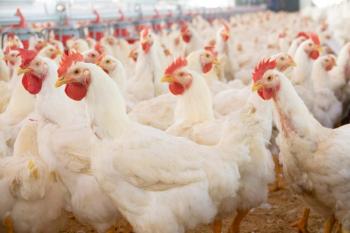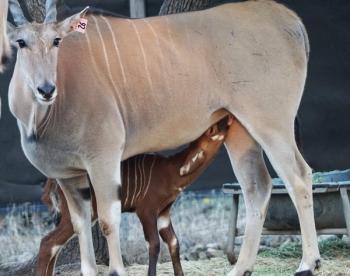
Managing GI diseases and motility disorders in exotic herbivores (Proceedings)
Rabbits and rodents belong to the orders Lagomorpha and Rodentia respectively. Rodents are further divided into the suborders Myomorpha (rats, mice, gerbils, and hamsters), Caviomorpha (guinea pigs and chinchillas), and Sciuromopha (squirrels, chipmunks, and prairie dogs).
Rabbits and rodents belong to the orders Lagomorpha and Rodentia respectively. Rodents are further divided into the suborders Myomorpha (rats, mice, gerbils, and hamsters), Caviomorpha (guinea pigs and chinchillas), and Sciuromopha (squirrels, chipmunks, and prairie dogs). The anatomy and physiology of small mammals with hind gut fermentative digestion is significant when considering husbandry, diet, and management of gastrointestinal (GI) diseases.
Clinical anatomy and physiology
Rabbits, guinea pigs, and chinchillas are herbivorous and possess thin-walled simple stomachs. The gastric anatomy is such that these patients are unable to vomit. In rabbits, the normal stomach content includes ingesta, fluid, and fur at a pH of 1-2. The small intestine is relatively short and is largely sterile due to the low gastric pH. Digestion and absorption of sugars, protein, vitamins, and fatty acids occurs at this site. Endocrine cells in the small intestine secrete motilin which helps stimulate motility in the small intestine, colon, and rectum. Diets high in carbohydrates inhibit this enzyme leading to GI immotility. Course fiber from plant material is used to stimulate gut motility but is rapidly eliminated and offers little nutritional value. The cecum is vast, containing 40% of the GI contents and is the site of fermentative digestion where resident microflora break down cellulose and proteins into volatile fatty acids, predominantly acetate. The flora is predominantly Bacteroides species, with ciliated protozoa, yeasts, and small numbers of Escherichia coli and Clostridia. Cecotrophy, the ingestion of cecal droppings, is used to achieve high food conversion which helps sustain the animal's high metabolic rate.
Cecotrophs are formed in the proximal colon and cecum from fine fiber particles and fluid. Coated with mucus from goblet cells in the colon, cecotrophs pass through the colon and are ingested directly from the anus without being masticated to provide important dietary recycling of protein and vitamins B and K. Cecal droppings tend to form 8 hours post feeding and are often called night droppings. High fiber is essential to this process. Low fiber diets lead to hypermotility and decreased cecotroph production. Diets high in carbohydrates produce increased glucose allowing for overgrowth of Clostridia and E. coli. In addition, high carbohydrate diets decrease the cecal pH via production of volatile fatty acids which also encourage overgrowth. The proximal colon has longitudinal muscular bands called teania and sacculations called haustra. The distal colon is not sacculated. Hard feces is moved through colon by segmental and haustral motility while water is absorbed across the intestinal wall. Fluid and small particles are separated in the process and moved to the periphery into the haustra where they are returned to the cecum by anti-peristalsis. Cecotrophs form and are expelled from the cecum and rapidly transported into the proximal colon with no separation or water absorption.
Several differences exist between the GI tract of rabbits and the large rodents (guinea pigs and chinchillas). One main difference is seen in the large intestinal microflora population with the predominant organism being Lactobacillus, instead of Bacteroides spp. Gastrointestinal digestion of crude fiber in small rodents is more efficient than in rabbits. Guinea pigs lack the enzyme L-gulonolactone oxidase which synthesizes ascorbic acid from glucose. Ascorbic acid is a necessary component in the production of connective tissues. Therefore, dietary vitamin C (5 mg/kg q 24 hrs) is required.
Small rodents (rats, mice, gerbils, hamsters) are omnivorous with interval feeding behavior throughout the day. Some species will also display hoarding behavior. They are monogastric but the stomach is divided into two functional portions by a muscular ridge. The forestomach is non-glandular, containing gram positive bacteria with some gram negative coliforms and clostridial organisms. This is the site of some limited fermentative digestion. The distal stomach is glandular providing for enzymatic digestion. The cecum of hamsters is sacculated containing both Bacteroides spp. and Lactobacillus for fermentative digestion. The cecum of rats and mice is less extensive than in the other species.
Husbandry implications
Fiber is an essential component of normal motility and gastrointestinal health in hind-gut fermenting small mammals. Dietary intake of low fiber, high carbohydrate diets results in disruption of normal food passage. Long stem hay is required by rabbits to provide dietary roughage. Small rodents are more tolerant of grain digestion and can be fed seeds and carbohydrates but these should not be fed to rabbits, guinea pigs, and chinchillas. Stress has a direct effect on gastrointestinal motility and may result in GI ileus. Stress may be physiologic (pain, underlying disease) or environmental such as a change in environment or diet. Any stimulus resulting in a change in the normal microflora of the GI tract may lead to ileus or enteritis in rabbits or rodents. Signs of GI disorders include decreased appetite or anorexia, diarrhea, decreased stool production, lethargy, abnormal stance, and tooth grinding. Any GI health problem in a rabbit or rodent species warrants intervention.
Gi disorders
Gastric Stasis and Ileus – Gastric stasis is generally a disorder of decreased motility and delayed or arrested gastric emptying. Causes may be mechanical or functional. Mechanical etiologies include gastric impaction secondary to dehydration, foreign body ingestion, and mass effects. Functional causes include stress, anorexia, lack of exercise, and ingestion of high carbohydrate/low fiber diet. Mechanical and functional etiologies may be primary or secondary with one factor leading to the manifestation of another. The result is decreased gastric emptying, dehydration and inspissation of the gastric contents leading to impaction. Gastric stasis may lead to generalized ileus in some cases. Small mammals affected by stasis tend to be rabbits, guinea pigs, and to a lesser degree chinchillas. Patients present with decreased appetite, decreased fecal output, and progressive lethargy. Abdominal palpation may be suggestive of gastric stasis if a firm doughy stomach, with or without gas, is palpable in the cranial abdomen of a patient with a supportive history. Abdominal radiography reveals an impacted gastric mass with gas halo indicative of gastric stasis. Gas accumulation throughout the GI tract is seen with generalized ileus. Prolonged gastric stasis may lead to potentially severe hepatic lipidosis and gastric ulceration, thus aggressive therapy is generally indicated.
The hallmarks of GI disease treatment in rabbits, guinea pigs, and chinchillas are fluid therapy, anti-gas therapy, pro-motility agents, and analgesia. Antibiotic therapy may be implemented as needed for bacterial infections. Rehydration of the patient and stomach contents is critical when addressing GI stasis. Crystalloid fluids at a rate of 100 ml/kg/day may be given by intravenous route in severely debilitated animals or by oral and subcutaneous routes. Oral administration of a gruel diet will also help hydrate the stomach contents. Critical Care for Herbivores® (Oxbow) is an excellent syringe feeding diet and relatively well received by anorexic herbivores. Canned pumpkin, blenderized pellets, and vegetable baby food are also appropriate syringe feeding diets. Patients should be fed approximately 50 ml/kg/day divided into feedings every 4-6 hours. Syringe feeding the anorexic patient offers the benefit of its fluid content but also helps re-establish GI motility as fiber drives the motility of hind-gut fermenting animals and reverses any negative energy balance. Prokinetic drugs are generally required to restore proper motility. Cisapride (0.5 mg/kg PO q 8 hrs) can be compounded by some pharmacies and is active along the entire GI tract. Metoclopramide (0.5 mg/kg SQ or PO q 8-12 hrs) has both central and GI effects but the prokinetic effects are not as potent as with cisapride and are localized to the proximal GI tract. Ranitidine (2-5 mg/kg PO q 12-24 hrs) has prokinetic and antacid properties which may be useful when treating GI stasis or ileus. Simethicone or infant gas drops administered orally (20-40 mg/kg q 6 hrs) will help alleviate excess gas present in the stomach or intestines. Encouraging exercise will also help promote motility and remove gas. Providing analgesia is important when managing motility disorders as pain will further reduce motility. Opioid analgesics (buprenorphine 0.03 mg/kg SQ q 6-8 hrs) are useful initially and their analgesic benefits outweigh and potential decrease in motility. Once the patient is rehydrated, NSAIDS may be implemented for continued analgesia (meloxicam 0.1-0.6 mg/kg SQ or PO q 24 hrs, carprofen 2-4 mg/kg SQ or PO q 24 hrs).
Gastric Obstruction
Gastric obstruction may present in a manner similar to gastric stasis but generally signs are acute and progression is rapid. The pylorus is a common site of obstruction from ingested objects. Radiography may not be sensitive enough to differential stasis from obstruction but the presence of fluid accumulation proximal to the obstruction is suggestive. Quick aggressive therapy is essential in cases of obstruction. Critical care measures must be implemented with fluids administered intravenously and analgesia provided. Systemic broad spectrum antibiotics are usually administered. Prokinetic drugs are contraindicated in cases of obstruction but are useful post-operatively. Decompression of the stomach may be attempted through placement of a nasogastric or orogastric tube. Surgical removal of the obstruction should be performed. The prognosis for survival is guarded to poor.
Bacterial enteritis
Bacterial enteritis is seen in rabbits and rodents and may have multiple etiologies. Some causes are more prevalent in certain species than others. Clostridiumspiroforme, C.difficile, and C. perfringens are all associated with enteritis in rabbits. C. piliforme is the causative agent in Tyzzer's disease in rabbits, guinea pigs, and small rodents. Clostridial organisms are considered normal flora in the GI tract of rabbits and rodents but become pathogenic when dysbiosis occurs. Dysbiosis refers to the disruption of normal inhibitory bacteria leading to the overgrowth of potentially pathogenic bacteria. Factors leading to dysbiosis include sudden diet changes, stress, immunosuppression, decreased motility, and administration of antibiotics that disrupt the normal GI flora. Antibiotics causing antibiotic induced enterotoxemia include oral administration of penicillins, cephalosporins, macrolides, and gentamicin and these should be avoided in rabbits and rodents. Clinical signs of enteritis include anorexia, depression, dehydration, hypothermia, and diarrhea which may be continuous or intermittent and contain blood or mucous. Diarrhea in hamsters is often referred to as “wet-tail” regardless of the etiology. The history and clinical signs are supportive of a diagnosis of enteritis. ELISA tests and enzyme assays to detect the presence of Clostridium spp. are available but their sensitivity and specificity are questionable. Treatment is aggressive fluid therapy and supportive care. The use of cholestyramine (2 g in 20 ml water by gavage q 24 hrs or added to supplemental feeding formulas) has been shown to bind bacterial toxins and may decrease mortality from enterotoxemia. The antidiarrheal loperomide hydrochloride (Immodium® – 0.1 mg/kg PO q 8 hrs x 3 days, then q 24 hrs x 2 days) along with supplemental feeding with high fiber diets promotes recovery. The use of bismuth subsalicylate has been reported in small rodents. The use of probiotics to repopulate the GI flora is controversial and of questionable use though transfaunation with fresh cecotrophs has been helpful. Enteritis caused by a primary bacterial pathogen may warrant the use of antibiotics including tetracycline, enrofloxacin, trimethoprim-sulfa, and metronidazole.
Rabbit Epizootic Enteropathy
Mucoid enteropathy is an idiopathic disorder of rabbits and is most commonly seen in rabbits 4-14 weeks of age. The etiology is unknown but the condition has been associated with dysbiosis and fiber-deficient diets. Clinical signs include anorexia, depression, abdominal pain, dehydration, lethargy, and mucoid diarrhea which may progress to mucous excretion. Mortality is high (30-80%) in the first three days. Treatment is supportive.
References
The Veterinary Clinics of North America – Exotic Animal Practice; Gastroenterology, Ritzman T.K., ed. 2005. W.B. Saunders Co., Philadelphia, PA.
Ferrets, Rabbits, and Rodents; Clinical Medicine and Surgery, 2nd ed. Quesenberry K.E., Carpenter J.W., eds. 2004, Saunders, Philadelphia, PA.
Newsletter
From exam room tips to practice management insights, get trusted veterinary news delivered straight to your inbox—subscribe to dvm360.






